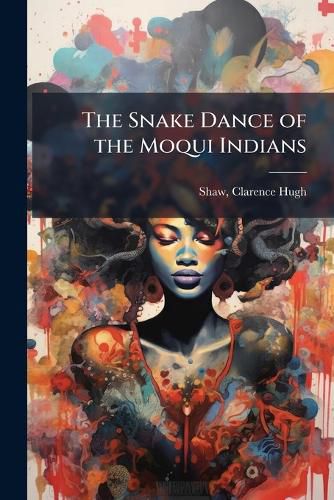Readings Newsletter
Become a Readings Member to make your shopping experience even easier.
Sign in or sign up for free!
You’re not far away from qualifying for FREE standard shipping within Australia
You’ve qualified for FREE standard shipping within Australia
The cart is loading…






"The Snake Dance of the Moqui Indians" by Clarence H. Shaw offers a detailed account of the traditional Snake Dance performed by the Hopi people (referred to as Moqui in the early 20th century). This ethnographic study provides insights into the rituals, beliefs, and cultural significance of this ancient ceremony. Shaw's work captures the essence of the dance, its preparation, and its role within the Hopi community.
Written in a descriptive and accessible style, the book explores the deep connection between the Hopi and their environment, particularly their reverence for snakes. Readers will gain an appreciation for the spiritual dimensions of the dance and its importance in maintaining harmony with nature and the ancestral spirits. This volume stands as a valuable historical record of Hopi traditions and a testament to the endurance of their cultural heritage.
This work has been selected by scholars as being culturally important, and is part of the knowledge base of civilization as we know it. This work was reproduced from the original artifact, and remains as true to the original work as possible. Therefore, you will see the original copyright references, library stamps (as most of these works have been housed in our most important libraries around the world), and other notations in the work.
This work is in the public domain in the United States of America, and possibly other nations. Within the United States, you may freely copy and distribute this work, as no entity (individual or corporate) has a copyright on the body of the work.
As a reproduction of a historical artifact, this work may contain missing or blurred pages, poor pictures, errant marks, etc. Scholars believe, and we concur, that this work is important enough to be preserved, reproduced, and made generally available to the public. We appreciate your support of the preservation process, and thank you for being an important part of keeping this knowledge alive and relevant.
$9.00 standard shipping within Australia
FREE standard shipping within Australia for orders over $100.00
Express & International shipping calculated at checkout
"The Snake Dance of the Moqui Indians" by Clarence H. Shaw offers a detailed account of the traditional Snake Dance performed by the Hopi people (referred to as Moqui in the early 20th century). This ethnographic study provides insights into the rituals, beliefs, and cultural significance of this ancient ceremony. Shaw's work captures the essence of the dance, its preparation, and its role within the Hopi community.
Written in a descriptive and accessible style, the book explores the deep connection between the Hopi and their environment, particularly their reverence for snakes. Readers will gain an appreciation for the spiritual dimensions of the dance and its importance in maintaining harmony with nature and the ancestral spirits. This volume stands as a valuable historical record of Hopi traditions and a testament to the endurance of their cultural heritage.
This work has been selected by scholars as being culturally important, and is part of the knowledge base of civilization as we know it. This work was reproduced from the original artifact, and remains as true to the original work as possible. Therefore, you will see the original copyright references, library stamps (as most of these works have been housed in our most important libraries around the world), and other notations in the work.
This work is in the public domain in the United States of America, and possibly other nations. Within the United States, you may freely copy and distribute this work, as no entity (individual or corporate) has a copyright on the body of the work.
As a reproduction of a historical artifact, this work may contain missing or blurred pages, poor pictures, errant marks, etc. Scholars believe, and we concur, that this work is important enough to be preserved, reproduced, and made generally available to the public. We appreciate your support of the preservation process, and thank you for being an important part of keeping this knowledge alive and relevant.